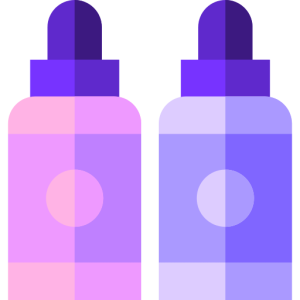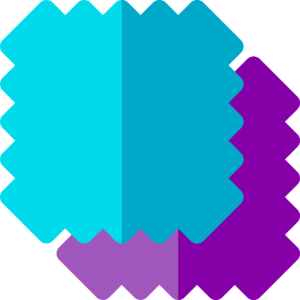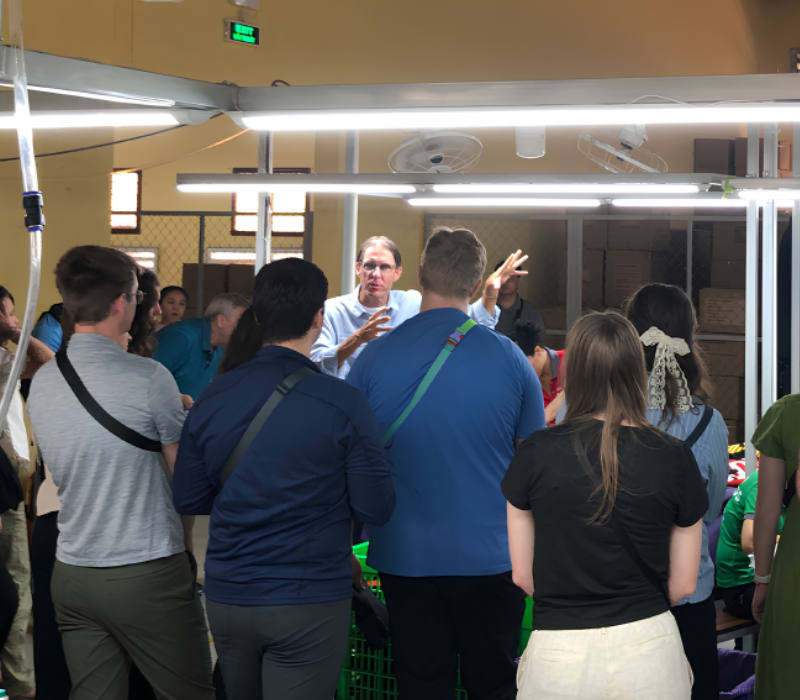• All-over-print
• Piece print
• Spot print
• CMYK print
• DTG
• Dye Sublimation
Ask me and I will explain each one or learn more below. This is my garment printing primer.
Usually the factory will take care of the printing without you having to get you involved, so, knowing the details is for control freaks like me. I like to follow the mantra, “knowledge is power.” The more you know, the better you are able to control price, and get the quality you want the first time around. This is why I decided to include this garment printing primer as something you should prepare for before meeting the factory.
Here are some basic topics you will encounter when discussing printing with sewing factories in Vietnam:
Ink Quality: Water Based Inks vs. Plastisol Inks
Screen-printing Techniques: Spot Color vs CMYK
All Over Print or Piece Print
Digital Printing Options
Watch my introduction video and read below to learn more about producing printed garments in Vietnam.
• All-over-print
• Piece print
• Spot print
• CMYK print
• DTG
• Dye Sublimation
Ask me and I will explain each one or learn more below. This is my garment printing primer.
As with cooking, it’s all about the ingredients. Choosing the right ink is critical to getting quality print results. Usually the print factory will not disclose what inks they are using because they use cheap Chinese inks. There are also Italian inks, German inks and Japanese inks that are more expensive, but these inks look better and last longer. If print is important to you, then you need to be aware of the different types of inks and ask where the inks are coming from. Garment printing primer tip #1.

The decision you will have to make is whether to use water-based or plastisol inks. Water based inks have a nicer hand feel, don’t last as long and are expensive. Plastisol based inks have a heavy hand feel, are cheaper and last longer. Ask the factory to show you an example of each. I prefer water based inks, but a good printer can use cheap Plastisol based inks and get great results – it depends on their level of expertise.

Sewing factories normally outsource the printing, so it’s important to keep in mind that when you are talking to the sewing factory you are not talking directly to the screen-printing experts. Often the sewing factories don’t know which inks are being used. They trust the sub-contractor to do their job without dictating details, like, what country the ink comes from. I like sharing garment printing primer tips.
You will encounter vocabulary problems when discussing the technical details of screen-printing. For example, the factory may not understand what you mean by Spot Print. They might refer to it as normal screen-printing. Or, instead of CMYK printing they will refer to it as gradient print. Be prepared for misunderstandings and find ways to communicate your ideas with pictures via email to double confirm that A = A. Another valuable garment printing primer insight.
Minimum Order Quantities (MOQ) for AOP is 1,000 meters of one design. The MOQ for piece print screen-printing is 1,000 pieces. If you ask the factory to do less than their MOQ they will either refuse to do the printing or charge you a surcharge. Garment printing primer tip #3.

AOP is when you print the same artwork all over the fabric before you cut the fabric. A typical screen size for AOP is 1.6 meters wide by 1.2 meters wide. This is what they call “the repeat.”

Piece print is when you cut the fabric first and then print on the sleeve only, for example. The screen size is usually 35 cm wide by 43 cm long. Screen sizes can vary depending on equipment used.
Carton boxes come in three basic options, 3 ply, 5 ply and 7 ply. 7 ply is stronger, but more expensive. It is important that you know these different options because you will need to choose. I recommend 5 ply. How strong your boxes need to be depends on your warehousing solution. If the boxes will be handled a lot, thrown around, and stacked high on top of each other then 7 ply makes sense even though it costs more. A 5 ply box will cost around 76 cents/box whereas a 7 ply box will cost 93 cents/box. Be careful when buying garment accessories in Vietnam.
A typical box size is 60cm x 40cm x 20cm. On average you can f…trong>Carton box factories have a minimum order quantity of at least 500 boxes. 500 boxes x 45 pieces/box = 22,500 pieces. If your total order is 2,000 pieces you will have a lot of unused boxes that you must buy. If you are lucky, the factory will have spare boxes to sell you. This scenario is true for all trims and accessories and is the reason why you should NOT produce garments in a foreign country if your quantity is small – like 100 pieces.
Add a few cents more for printing on the outside of the box as well. The artwork on the box can be shipping information plus branding (your logo and slogan.) Usually the print is just one color: black. I recommend basic shipping info like “box 1 of 30” with the destination address and your logo. Did you think about: If you put your logo on the box and your brand is famous, there is a higher chance of boxes being stolen? Are you comfortable with buying garment accessories in Vietnam?

